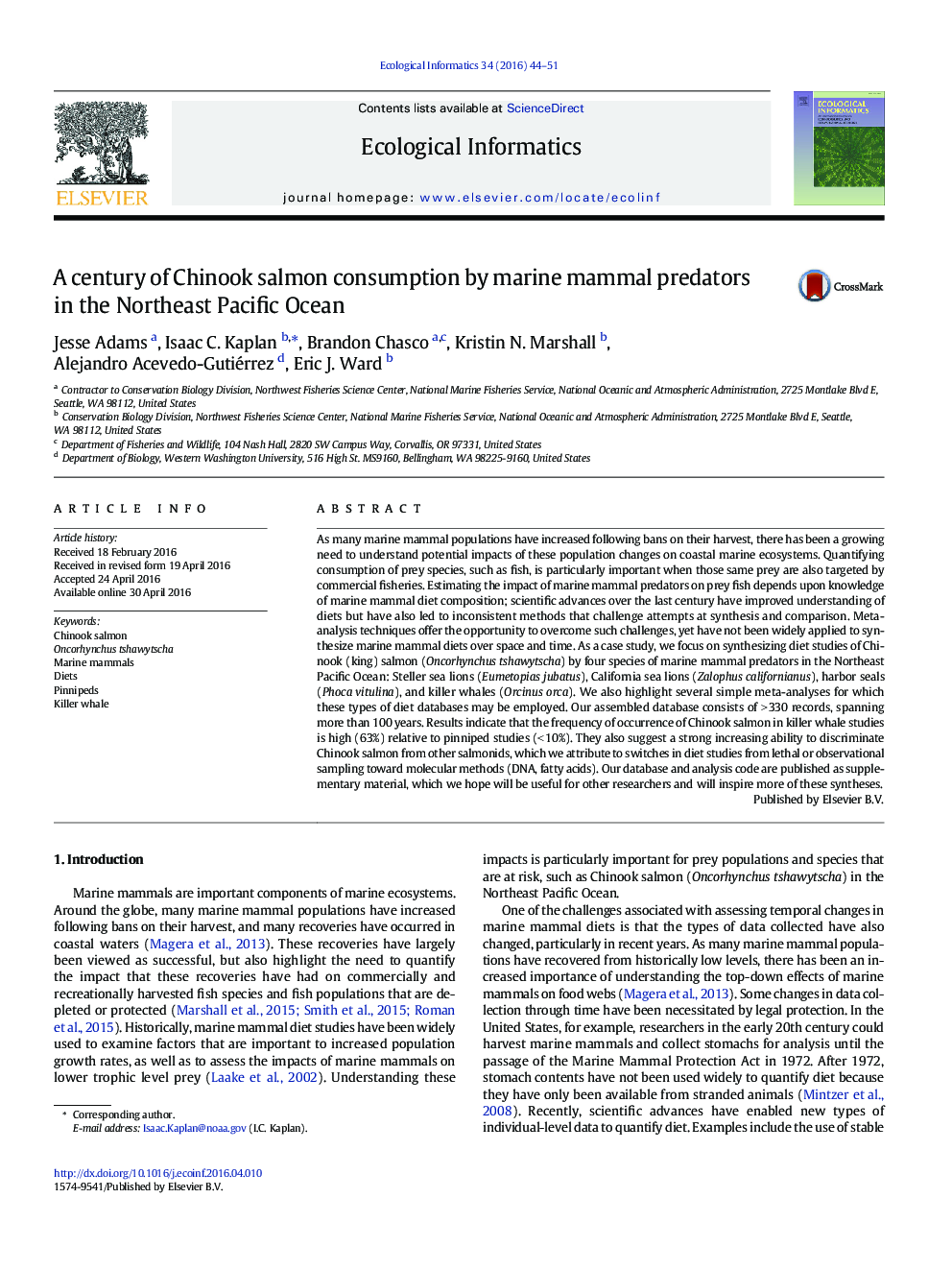| کد مقاله | کد نشریه | سال انتشار | مقاله انگلیسی | نسخه تمام متن |
|---|---|---|---|---|
| 4374760 | 1617200 | 2016 | 8 صفحه PDF | دانلود رایگان |
• Recovery of marine mammal populations may lead to more predation on Chinook salmon
• We present a meta-analysis of consumption of Chinook salmon in the NE Pacific
• Frequency of occurrence of Chinook salmon in killer whale studies is high (63%), and lower in pinniped studies (< 10%)
• Ability to discriminate Chinook salmon from other salmonids has increased over time
• All data (> 330 records) and R code for analysis are publicly available
As many marine mammal populations have increased following bans on their harvest, there has been a growing need to understand potential impacts of these population changes on coastal marine ecosystems. Quantifying consumption of prey species, such as fish, is particularly important when those same prey are also targeted by commercial fisheries. Estimating the impact of marine mammal predators on prey fish depends upon knowledge of marine mammal diet composition; scientific advances over the last century have improved understanding of diets but have also led to inconsistent methods that challenge attempts at synthesis and comparison. Meta-analysis techniques offer the opportunity to overcome such challenges, yet have not been widely applied to synthesize marine mammal diets over space and time. As a case study, we focus on synthesizing diet studies of Chinook (king) salmon (Oncorhynchus tshawytscha) by four species of marine mammal predators in the Northeast Pacific Ocean: Steller sea lions (Eumetopias jubatus), California sea lions (Zalophus californianus), harbor seals (Phoca vitulina), and killer whales (Orcinus orca). We also highlight several simple meta-analyses for which these types of diet databases may be employed. Our assembled database consists of > 330 records, spanning more than 100 years. Results indicate that the frequency of occurrence of Chinook salmon in killer whale studies is high (63%) relative to pinniped studies (< 10%). They also suggest a strong increasing ability to discriminate Chinook salmon from other salmonids, which we attribute to switches in diet studies from lethal or observational sampling toward molecular methods (DNA, fatty acids). Our database and analysis code are published as supplementary material, which we hope will be useful for other researchers and will inspire more of these syntheses.
Journal: Ecological Informatics - Volume 34, July 2016, Pages 44–51
